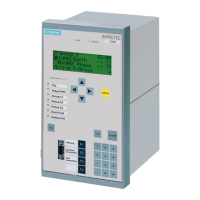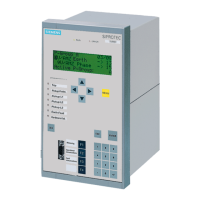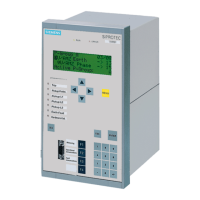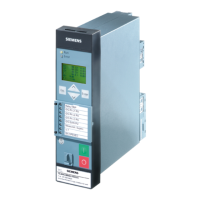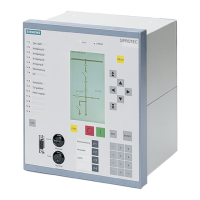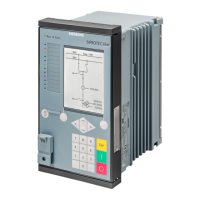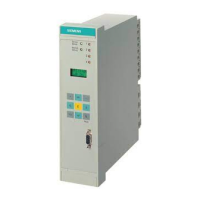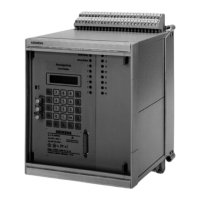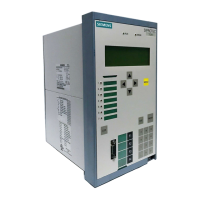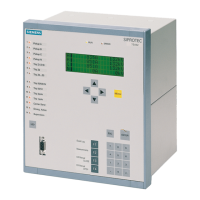3.1 Mounting and Connections
451
7SD5 Manual
C53000-G1176-C169-1
reduced by well-conductive cable jackets and by armouring (low reduction factor, for
both high voltage cable and pilot cables).
The induced voltage can be calculated with the following formula:
U
i
= 2 π f · M · I
k1
· l · r
1
· r
2
with
U
i
= induced longitudinal voltage in V,
f = nominal frequency in Hz,
M = mutual inductance between power line and pilot wires in mH/km,
I
k1
= maximum earth fault current via power line in kA,
l = distance between energy line and pilot wires in km,
r
1
= reduction factor of power cable (r
1
= 1 for overhead lines),
r
2
= reduction factor of pilot wire cable.
The calculated induced voltage should neither exceed the 60% rate of the test voltage
of the pilot wires nor of the device connections (binary inputs and outputs). Since the
latter were produced for a test voltage of 2kV, only a maximum induced longitudinal
voltage of 1.2kV is allowed.
3.1.2 Hardware Modifications
3.1.2.1 General
A subsequent adaptation of hardware to the power system conditions can be neces-
sary for example with regard to the control voltage for binary inputs or termination of
bus-capable interfaces. Follow the procedure described in this section, whenever
hardware modifications are carried out.
Auxiliary Voltage There are different power supply voltage ranges for the auxiliary voltage (refer to the
Ordering Information in Appendix A.1). The power supplies of the variants for
60/110/125 VDC and 110/125/220 VDC, 115 VAC are largely interchangeable by mod-
ifying the position of the jumpers. The assignment of these jumpers to the nominal
voltage ranges and the spatial layout on the PCB are described further below at „In-
put/Output Board C-I/O-1 and C-I/O-10“. When the relays are delivered, these
jumpers are set according to the name-plate sticker. Generally, they need not be al-
tered.
Life Contact The life contact of the device is a changeover contact from which either the NC contact
or the NO contact can be connected to the device terminals via a plug-in jumper (X40).
The assignment of the jumper to the contact type and the spatial arrangement of the
jumper are described in the following section under the margin heading „Input/Output
Board(s) C-I/O-1 and C-I/O-10“.
N o m i n a l C u r r e n t s The input transformers of the device are set to a nominal current of 1 A or 5 A with
jumpers. Jumper settings determine the rating of the current input transducers of the
device. The assignments of the jumpers to the nominal current and the spatial layout
of the jumpers are described in the following section under the margin heading „In-
put/Output Board C–I/O -2“.
www . ElectricalPartManuals . com
